Find Restaurant
Online Reservation
Find Restaurant
Online Reservation
Search Results: Thai
1 - 15 of 15 restaurants
-

Sha Tom Yum Kung Pochana
シャー・トムヤムクン・ポーチャナー
Ueno, Ueno/Yanaka, Tokyo
Thai/Vietnamese, Other Asian / Thai / Asian Creative Cuisine / Thai Curry
Dinner: 3,000 JPY / Lunch: 1,000 JPY
Dinner: 3,000 JPY / Lunch: 1,000 JPY
[Tuesday - Sunday, Day Before Holidays, Holidays] Lunch 11:00 - 15:00 (last order 14:30) [Tuesday - Saturday, Day Before Holidays, Holidays] Dinner 17:00 - 23:00 (last order 22:00) [Sunday] Dinner 17:00 - 22:00 (last order 21:00)
Monday
Unknown.
A one-minute walk from JR Ueno Station (exit from the Central Ticket Gate or Shinobazu Exit).
-

Celadon
セラドン
Sasazuka, Shimokitazawa, Tokyo
Thai/Vietnamese, Other Asian / Thai / Thai Curry / Imported Beer
Dinner: 3,500 JPY / Lunch: 1,000 JPY
Dinner: 3,500 JPY / Lunch: 1,000 JPY
[Tuesday-Friday] Lunch: 11:30-14:30 (last order 14:15)/ Dinner: 17:30-23:30 (last order 22:45). [Saturdays/Sundays/holidays] Dinner: 16:30-23:30 (last order 22:45).
Mondays
English menu available.
4 minutes by foot upon alighting from Hatagaya station or Sasazuka station on the Keio New Line
-

Thai ryori bar Taizou
タイ料理バル タイ象
Shimbashi/Shiodome, Ginza/Yurakucho/Tsukiji, Tokyo
Thai Curry, Curry / Thai / Thai Curry
Dinner: 5,000 JPY / Lunch: 1,000 JPY
Dinner: 5,000 JPY / Lunch: 1,000 JPY
Lunch 11:30 am - 2:30 pm (last order 2:00 pm) [ Weekday,Saturday,Holidays ] Dinner 5:00 pm - 12:00 am (last order 11:15 pm)
Sunday
English-speaking staff available.
-
MUMPAK BAR
MUMPAK BAR
Yushima, Ueno/Yanaka, Tokyo
Thai/Vietnamese, Other Asian / Thai / Imported Beer
4,000 JPY
4,000 JPY
[ Monday ~ Saturday,Day Before Holidays ] Dinner 5:00 pm - 5:00 am (last order 4:30 am)
Sunday,Holidays
English-speaking staff available.
-
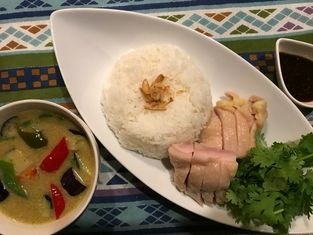
Southeast Asia Street Food Bar Bagus
東南アジア屋台酒場 バグース
Dogenzaka/Shinsen, Shibuya, Tokyo
Asia, Other Asian / Thai / Indonesian/South East Asian / Asian Creative Cuisine
4,500 JPY
4,500 JPY
[ Weekday,Saturday,Holidays,Day Before Holidays ] 5:00 pm - 12:00 am
Irregular
English menu available.
-
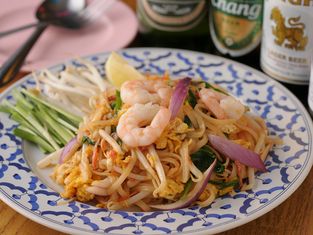
Thai food stall tavern Daotai Asagaya main store
タイ屋台居酒屋 ダオタイ 阿佐ヶ谷本店
Asagaya/Koenji, Nakano, Tokyo
Thai/Vietnamese, Other Asian / Thai / Asian Creative Cuisine / Thai Curry
Dinner: 3,000 JPY / Lunch: 3,000 JPY
Dinner: 3,000 JPY / Lunch: 3,000 JPY
[ Monday,Wednesday ~ Saturday ] Dinner 5:00 pm - 11:00 pm (last order 10:00 pm) [ Sunday,Holidays ] Dinner 5:00 pm - 10:00 pm (last order 9:00 pm)
Tuesday
English menu available.
-
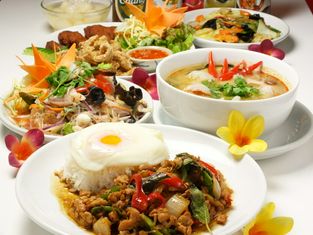
Shibuya Gapao restaurant
渋谷 ガパオ食堂
Dogenzaka/Shinsen, Shibuya, Tokyo
Thai/Vietnamese, Other Asian / Thai / Thai Curry / Cocktail
Dinner: 3,800 JPY / Lunch: 980 JPY
Dinner: 3,800 JPY / Lunch: 980 JPY
Lunch 11:30 am - 3:00 pm (last order 2:30 pm) Dinner 6:00 pm - 11:00 pm (last order 10:00 pm)
None
Unknown.
-
Suppon to Thai ryori Tsukishima Genpei
すっぽんとタイ料理 月島源平
Tsukishima, Odaiba/Tsukishima/Toyosu, Tokyo
Japanese, Japanese / Suppon (soft-shelled turtle) / Thai / Wine
Dinner: 6,000 JPY / Lunch: 1,300 JPY
Dinner: 6,000 JPY / Lunch: 1,300 JPY
[ Tuesday ~ Saturday,Day Before Holidays ] Lunch 11:30 am - 2:00 pm (last order 1:30 pm) We do not accept reservations for lunch. Also, there may be times when we are unable to answer phone calls during lunch hours. [ Tuesday ~ Sunday,Holidays,Day Before Holidays ] Dinner 6:00 pm - 11:00 pm (last order 10:00 pm) Last dinner orders are at 22:00 for food and 22:30 for drinks.
Monday Starting in February 2025, we will be closed on Mondays. We will keep you updated on our Instagram regarding closures and other information.
Unknown.
-
Store specializing in Gapao
ガパオ専門店
Hongo, Ueno/Yanaka, Tokyo
Thai/Vietnamese, Other Asian / Thai / Asian Creative Cuisine / Thai Curry
Dinner: 3,000 JPY / Lunch: 1,000 JPY
Dinner: 3,000 JPY / Lunch: 1,000 JPY
Lunch 11:00 am - 3:00 pm (last order 2:30 pm) Dinner 5:00 pm - 10:00 pm (last order 9:30 pm)
Saturday,Sunday,Holidays
Unknown.
-
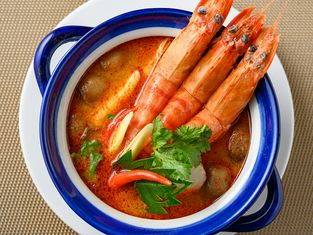
Thai food URAIWAN
タイ料理 URAIWAN
Kameari/Aoto, Asakusa/Ryogoku, Tokyo
Thai/Vietnamese, Other Asian / Thai / Thai Curry / Wine
4,000 JPY
4,000 JPY
11:00 am - 11:00 pm (last order 9:20 pm)
Monday,Tuesday Please contact the store for holidays
Unknown.
-
Asiatique Tachikawa
アジアティーク立川店
Tachikawa, Hachioji/Tachikawa, Tokyo
Bar, Italian/French / Thai / Indian / Wine
Dinner: 3,000 JPY / Lunch: 1,000 JPY
Dinner: 3,000 JPY / Lunch: 1,000 JPY
11:00 am - 11:00 pm (last order 10:30 pm)
None Business hours during the year-end and New Year holidays 12/31 lunch only (until 15:00) *1/1 store closed *1/2 ~ normal business hours
English menu and English-speaking staff available.
-
Asiatique Toranomon
アジアティーク虎ノ門店
Kamiyacho, Akasaka, Tokyo
Thai/Vietnamese, Other Asian / Thai / Indonesian/South East Asian / Wine
Dinner: 6,000 JPY / Lunch: 1,000 JPY
Dinner: 6,000 JPY / Lunch: 1,000 JPY
11:00 am - 11:00 pm (last order 10:30 pm) (Launch Time11:00~16:00)(Dinner Time16:00~23:00)
None * New Year's holiday hours: 12/31 Lunch only (closes at 15:00), 1/1 closed, 1/2 - normal business hours
English menu and English-speaking staff available.
-
Asiatique Ginza store
Asiatique【アジアティーク】銀座店
Ginza, Ginza/Yurakucho/Tsukiji, Tokyo
Thai/Vietnamese, Other Asian / Thai / Indonesian/South East Asian / Wine
Dinner: 8,000 JPY / Lunch: 2,000 JPY
Dinner: 8,000 JPY / Lunch: 2,000 JPY
[ Monday ~ Sunday,Holidays,Day Before Holidays ] 11:00 am - 11:00 pm (last order 10:30 pm)
None Business hours during the year-end and New Year holidays 12/31 lunch only (until 15:00) *1/1 store closed *1/2 ~ normal business hours
English menu and English-speaking staff available.
-
thalee ling
thalee ling
Yoyogi-Uehara, Shimokitazawa, Tokyo
Thai/Vietnamese, Other Asian / Thai / Thai Curry / Wine
Dinner: 10,000 JPY / Lunch: 5,000 JPY
Dinner: 10,000 JPY / Lunch: 5,000 JPY
[ Saturday,Sunday,Holidays ] Lunch 11:30 am - 3:00 pm Last entry 13:00 [ Saturday,Sunday,Holidays ] Dinner 5:00 pm - 10:30 pm Last entry 20:00 [ Monday,Tuesday,Thursday,Friday ] Dinner 5:30 pm - 10:30 pm Last entry 20:00
Wednesday Other uncertainty
Unknown.
-
Sawambisutoro
SAAWAAN BISTRO
Azabu-Juban, Roppongi, Tokyo
Thai/Vietnamese, Other Asian / Thai
Dinner: 9,999 JPY / Lunch: 5,999 JPY
Dinner: 9,999 JPY / Lunch: 5,999 JPY
[ Weekday,Day Before Holidays ] Lunch 11:00 am - 3:00 pm (last order 2:00 pm) /Bar business hours 11:00-14:00 [ Weekday,Day Before Holidays ] Dinner 5:30 pm - 11:00 pm Food LO 22:00, Drink LO 22:30/Bar business hours 17:30-23:00 (LO 22:30) [ Saturday,Sunday,Holidays ] Lunch 11:00 am - 4:00 pm (last order 3:00 pm) Last order for the course is 2:30pm. [ Saturday,Sunday,Holidays ] Dinner 5:30 pm - 11:00 pm (last order 10:00 pm) Food LO 22:00, Drink LO 22:30/Bar business hours 17:30-23:00 (LO 22:30)
English menu and English-speaking staff available.
Find Other Categories/Cuisines
- Tokyo Area Shabu-shabu (boiled meat slices)/Sukiyaki (hot pot stew)
- Tokyo Area Teppanyaki (iron griddle grilling)
- Tokyo Area SushiSousaku Sushi (creative sushi)Oshizushi (pressed sushi)
- Tokyo Area Sashimi (raw fish)/Seafood
- Tokyo Area Taverns
- Tokyo Area Yakiniku (grilled meat)Yakiniku (Japanese BBQ)
Select the Thai restaurants you are interested in from the recommendations for Tokyo Area.
With SAVOR JAPAN, you can search recommended Thai restaurants found in Tokyo Area according to your search criteria such as area, budget, and cuisine.
These recommendations for Tokyo Area include the restaurants in Tokyo.
Recommended cuisines for Tokyo Area are Sushi, Sashimi, Tempura, Teppanyaki, Shabu-shabu / Sukiyaki, Yakiniku, Taverns(Izakaya) and Kaiseki(course menu).





